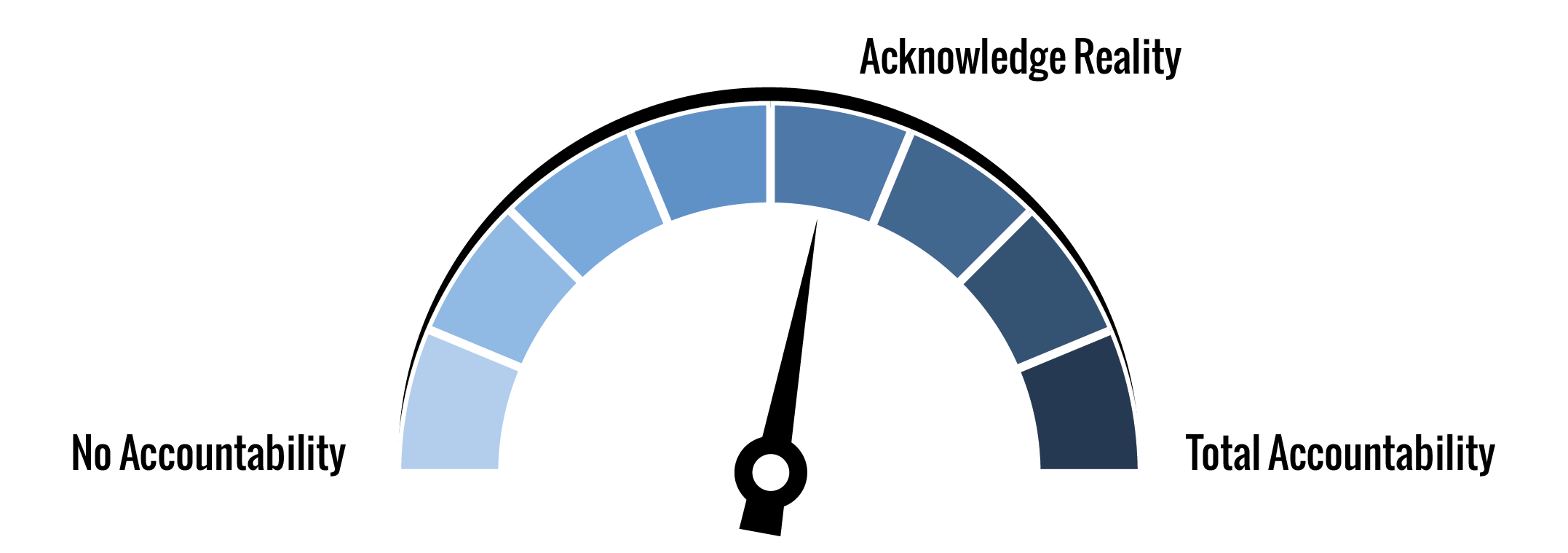Any views or opinions presented in this article are solely those of the author and do not necessarily represent those of the company. AHP accepts no liability for the content of this article, or for the consequences of any actions taken on the basis of the information provided unless that information is subsequently confirmed in writing.
Introduction
In the debate around healthcare reform or in conversations about what’s wrong with the U.S. healthcare system, public health rarely earns a mention. Insurance companies, hospital systems, providers, pharmaceutical companies, government, and individuals all seem to contribute to the problem in one way or another – where does public health fit in? And really, what does “public health” even mean and what types of services does it span?
This article will explain the broad set of roles and responsibilities of public health in general – how it touches you and me, and how it influences the state of health in our country. This article will also take a closer look at public health operations – how it is funded, who determines how money is spent, and what mechanisms hold public health accountable to improve population health.
Roles, Responsibilities, and Impacts of Public Health
Defining Public Health
Before we can begin to understand the complicated web of funding and determination of priorities of public health, we need to have a grasp of both its goals and its span of services. Public health fundamentally promotes and protects the health of people and their communities. While most of the U.S. healthcare system is devoted to treating people who are already sick, public health focuses on keeping people healthy. The three primary ways in which public health systems influence our lives are (1) through the development of community programs, (2) through advocating for health- and safety-promoting policies, and (3) through dissemination of evidence-based information.
Span of Services
When we think about our health, we often focus on diet and exercise alone, and overlook other significant influences. There are many social and environmental factors that have a big impact on both our health and our ability to make healthy choices. Some of these factors include: income, education, race, family/support networks, working conditions, living conditions, community safety, and stress levels. Public health organizations must consider and influence all of these elements. A few examples of the broad array of public health activities include:
- Protecting communities from the spread of infectious disease through vaccinations, education, and medical research/advancements
- Creating and monitoring standards around environmental contaminants (lead exposure, safe drinking water, air pollution, etc.)
- Educating the public on harmful effects of drug, alcohol, and tobacco use and developing support programs for those struggling with substance abuse
- Advocating for safe communities by researching and lobbying for programs and policies that reduce gun violence and create safe infrastructure for walking/bicycling (to work, to school)
- Promoting policies that make healthy choices accessible and affordable (e.g., school lunch programs)
Impacts on Population Health
When you start to think about health status as being influenced by all aspects of our lives, you begin to understand that healthcare itself is only a small part of what contributes to individual or population health. Yet, in the U.S. we put almost all of our healthcare money towards the treatment of conditions vs. prevention – less than 5% of total healthcare expenditures are spent on public health.
According to one study, the U.S. could save a significant amount of money ($16.5B over five years, in 2004 dollars) on healthcare costs if we were to invest as little as $10 per person into “evidence-based programs that improve physical activity and nutrition and lower smoking rates in communities” (Levi, Segal, & Juliano, February 2009). Those savings come in the form of preventing the development and managing the progression of costly chronic illnesses. Another study shows that for each 10% increase in strategic local public health spending, infant mortality rates and deaths due to cancer, diabetes, and cardiovascular disease decrease by 1-7% (Mays & Smith, July 2011).
While there are studies out there showing the potential financial benefits that would come from spending more on public health, much of the reason for lack of investment in this area is a lack of clear, or clearly communicated, information on the ROI (return on investment) of specific preventive and health-promoting activities. Public health institutions would greatly benefit from policymakers and other key stakeholders in the healthcare industry having a better understanding of how to curb long-term costs through the expansion of health-promoting programs.
Structure, Funding, and Spending of Public Health
The public health system in our country is, in the simplest terms, complicated and inconsistent. There are various levels and many branches of public health, but for a basic overview let’s break it up into Federal, State, and Local (community) programs and funding.
Federal
Federal public health agencies, such as the Centers for Disease Control and Prevention (CDC), are financed by federal discretionary funding, which essentially means that any money set aside for public health spending cannot be allocated without congressional approval. Direct federal spending on public health is typically focused on disaster relief or mitigation (e.g., Hurricane Katrina, H1N1 flu pandemic). Most of the federal money set aside for public health is allocated down to states and localities categorically, which means that the federal government has already prescribed how that money must be spent (e.g., $X for WIC, $Y for Infectious Disease, etc.). The rest of the money is allocated down through block grants, where states and localities can request funding for specific programs/services.
State
State health departments (SHD) are financed through a combination of federal funds (through grants and categorical allocations, per above), general state funds, Medicare/Medicaid, and public health fees/fines. However, since “general funds” cover a wide variety of public services, public health entities are competing with education, law enforcement, etc. for that money. The proportion of funding that comes from these four areas varies widely by state, but federal funding makes up the majority.
Receiving a significant portion of funding through federal categorical allocation often causes many State Health Departments (SHD) to develop programs based on what is funded rather than what is needed – i.e., this money is not able to be used at the discretion of the SHD, based on their state’s specific needs. Funding through block grants is more tailored to specific needs, but the money received through those grants must be used for a very specific purpose.
Local
Local health departments (LHD) get some funding from both federally- and state- allocated funds, but, while there is wide variation in communities across the county, generally most of the funding for LHDs comes from the locality itself – general funds, local taxes, and property taxes. LHDs often have more flexibility in how to spend their money than SHDs do.
Funding is a real challenge for public health systems at all levels. Funding streams are unpredictable, are in competition with other public services, and are often predetermined as to how they must be spent. There is very little consistency across states and localities with how revenue is allocated to various initiatives and, due to the complex nature of the funding, there is little transparency to the public of how public health dollars are being spent. Some of these complexities, in addition to heavy administrative and reporting burdens, also contribute to the difficulty of performing accurate analyses of program outcomes.
AHP Accountability IndexTM (AAI) and Public Health
Rating accountability for public health is not a straightforward task. While public health entities no doubt have a great deal of focus on improving all three aspects of the Triple Aim (patient experience, population health, cost of care), they are often constrained in reaching their full potential by infrastructure, administrative, and funding challenges. Who should be held accountable for addressing those limitations? Is it the responsibility of public health organizations to simply do the best with what they have, or should those organizations move beyond that mindset? And what is “the best”? Who should be determining the priorities and investments of various public health entities?
In reality, every different public health system will rate differently. Some will fall more into the “make excuses” mindset when it comes to administrative burdens and funding shortages. They will take their allocated funding and use it as prescribed and do the best with what they have left to meet community needs. Others will embrace their role as an advocate for the public’s needs, take full responsibility for improving the welfare of their communities and come up with innovative solutions in the face of significant challenges.
With those considerations in mind, the following chart summarizes the author’s assessment of AAI for public health’s responsibility to each of the Triple Aim issues.
| Triple Aim Category | Weight | Rating |
| Patient Experience | 0.333 | 62.5% |
| Population Health | 0.333 | 75.0% |
| Cost of Care | 0.334 | 37.5% |
| Overall | 1.000 | 58.3% |
Public health entities generally have less of a focus on the cost of care itself and more of a focus in preventing the need for care in the first place – reducing costs overall by improving our nation’s health. While funding challenges are not going away, more state and local health departments are committing to improving the health of their communities even if they don’t have all the resources at their disposal that they may like.
Conclusion
Public health is a fascinating, complex, and far-reaching topic. This article focused on explaining in simple terms what public health is – what are its goals, what is its basic structure, and what are its key challenges. While the article touched briefly on some of the opportunities within public health to improve our nation’s population health, and therefore our healthcare system, additional details on various public health initiatives (and success stories) are out of scope. There is a “Further Reading” section included in the Appendix of this article for anyone who is interested in doing additional research of their own.
At the end of the day, a critical activity for all public health entities is the dissemination of accurate and persuasive information around positive program outcomes to those who make funding decisions. Policymakers need to be convinced of the financial value of investing in public health, for the benefit of us as individuals and as a nation. Public health has yet to move into the spotlight in healthcare reform discussions, but it will become an increasingly important part of any solution as U.S. healthcare costs continue to rise.
Levi, J., Segal, L. M., & Juliano, C. (February 2009). Prevention for a Healthier America: INVESTMENTS IN DISEASE PREVENTION YIELD SIGNIFICANT SAVINGS, STRONGER COMMUNITIES. Washington, DC: Trust for America’s Health.
Mays, G. P., & Smith, S. A. (July 2011). Evidence Links Increases In Public Health Spending To Declines In Preventable Deaths. HealthAffairs.
American Public Health Association (apha.org)
Centers for Disease Control and Prevention. (cdc.gov)
Meit M, Knudson A, Dickman I, Brown A, Hernandez N, and Kronstadt, J. An Examination of Public Health Financing in the United States. (Prepared by NORC at the University of Chicago.) Washington, DC: The Office of the Assistant Secretary for Planning and Evaluation. March 2013.
Appendix: Further Reading
GENERAL READING
The websites for each of the organizations listed below contain an immense amount of information related to the work those entities do and how they impact population health.
American Public Health Association
https://www.apha.org/
APHA champions the health of all people and all communities. We strengthen the public health profession. We speak out for public health issues and policies backed by science. We are the only organization that influences federal policy, has a 145-year perspective and brings together members from all fields of public health.
Centers for Disease Control and Prevention
https://www.cdc.gov/
The CDC is one of the major operating components of the Department of Health and Human Services. CDC increases the health security of our nation. As the nation’s health protection agency, CDC saves lives and protects people from health threats. To accomplish our mission, CDC conducts critical science and provides health information that protects our nation against expensive and dangerous health threats, and responds when these arise.
SPECIFIC TOPICS
The specific websites listed below showcase some of the efforts of various public health entities, in order to provide a small window into the many population health improvement opportunities. I have also included one study done by The Commonwealth Fund showing how the U.S. compares to other countries on a variety of metrics that can be influenced through public health systems.
Generation Public Health
https://www.apha.org/what-is-public-health/generation-public-health
In the U.S., where you live, your income, education, race and access to health care mean as much as a 15-year difference in how long you will live. Equally shocking: studies show that even wealthy, highly educated Americans with access to quality care suffer a health disadvantage to peers in other high-income countries. That’s why APHA created Generation Public Health.
Healthy People 2030
https://www.healthypeople.gov/2020/About-Healthy-People/Development-Healthy-People-2030
Every decade, the Healthy People initiative develops a new set of science-based, 10-year national objectives with the goal of improving the health of all Americans. The development of Healthy People 2030 includes establishing a framework for the initiative (including the vision, mission, foundational principles, plan of action, and overarching goals) and identifying new objectives.
Healthiest Cities Challenge – Success Stories
http://www.healthiestcities.org/resources/success-stories
The Healthiest Cities & Counties Challenge is a partnership between the Aetna Foundation, the American Public Health Association and the National Association of Counties, and is administered by CEOs For Cities. The partnership empowers small to mid-size U.S. cities and counties to create a positive health impact. This link highlights some of the success stories seen to-date.
Mirror, Mirror 2017: International Comparison Reflects Flaws and Opportunities for Better U.S. Health Care
by Eric C. Schneider, Dana O. Sarnak, David Squires, Arnav Shah, and Michelle M. Doty
http://www.commonwealthfund.org/interactives/2017/july/mirror-mirror/
The Commonwealth Fund provides an analysis of U.S. healthcare compared to other developed nations across key performance metrics, including health equity and health outcomes. Included on the site are interactive graphics showing how the U.S. stacks up.
About the Author

Bethany McAleer, FSA, MAAA, is a Consulting Actuary with Axene Health Partners, LLC located in the Washington DC Metropolitan Area.

